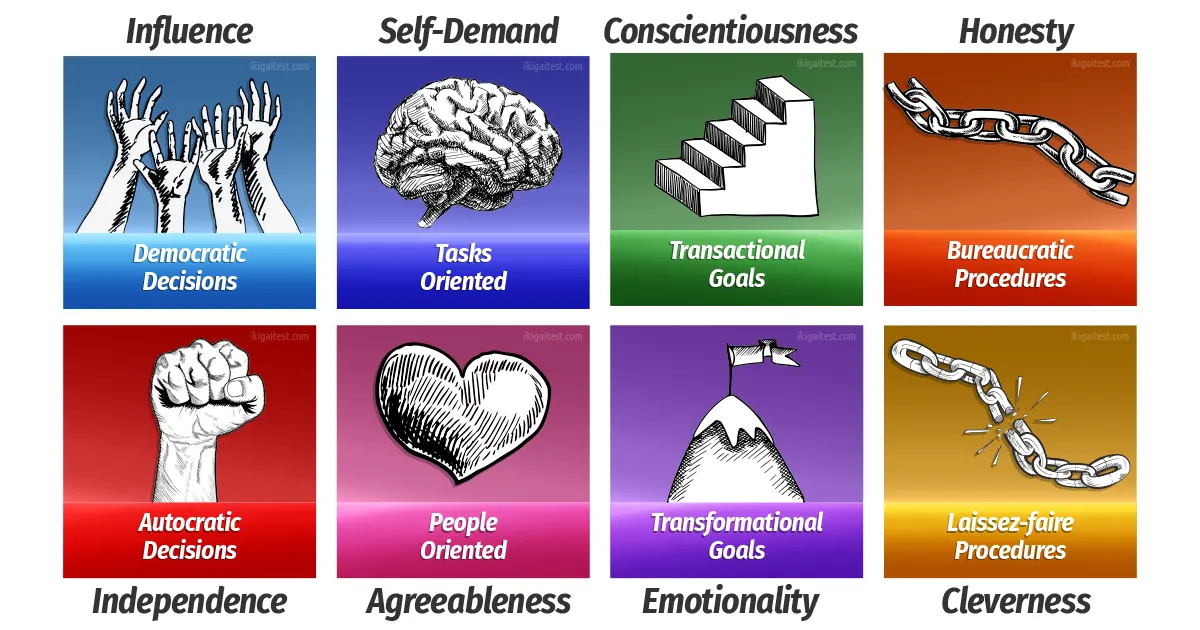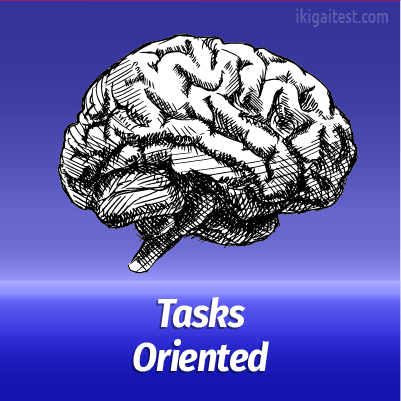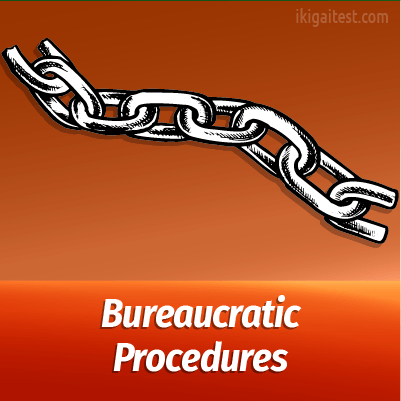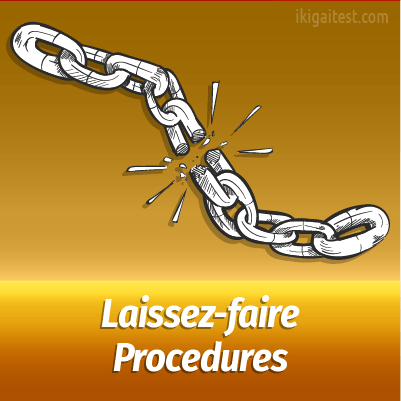Are there really 8 different leadership styles?
Well yes, but actually no… Most people think that the leadership styles are completely independent and that you can only have one leadership style, but in real life situations every leader has to choose between different approaches to 4 situations:
Making decisions, focusing on the important things, establishing goals and following procedures.
Your weirdness is closely related to the way you lead, for example:
- Leaders with high influence will make democratic decisions.
- Leaders with high independence will make autocratic decisions.
- Agreeable leaders will be people oriented.
- Self-demanding leaders will be task oriented.
- Leaders with high emotionality prefer transformational goals.
- Leaders with high conscientiousness prefer transactional goals.
- Honest leaders tend to follow strict or bureaucratic procedures.
- Clever leaders are willing to use flexible procedures.
Of course there’s always a few exceptions… Like if a leader values honesty and cleverness at the same time, but for most people Weirdness and Leadership styles are linked.

How do you make decisions?
Independent leaders like making their own decisions, if they are very introverted they could have trouble inspiring people and getting them to agree with them, while highly influential and extroverted leaders might enjoy democratic decisions since they can easily get everyone to agree with them.

Democratic Leadership
Democratic leaders will ask people around them for an honest opinion and value their advice, this is great for moral and cooperation, but remember, if there’s an urgent decision to be made… Make it! Don’t waste time asking everyone what they think!
Good democratic leaders… Will ask the relevant coworkers for their opinion before making an important decision. Acknowledge when someone else comes up with a great idea. They are fully responsible for the final decision and it’s outcomes.
Bad democratic leaders… Will ask anyone their opinion even in unrelated matters. Take credit for someone else’s ideas when things workout great, but when things fails they’ll immediately put the blame on whoever came up with the idea. They will ask you for your opinion but always ignore it.
Autocratic Leadership
Autocratic leaders are usually very capable, stubborn and do whatever they think is necessary to achieve a goal, this is useful for fast paced and highly competitive companies but it can create a hostile environment in jobs where cooperation is essential.
Good autocratic leaders… Have vast experience and training, so they are good at making decisions, they won’t ask for your opinion but might ask you for facts, for example: What’s the worst that could happen if…?
Bad autocratic leaders… Have little to no experience and training and will make rash decisions without caring about the worst possible outcomes. Sometimes they will ask the whole team for their opinion, but only to know who agrees with their will and who is against them.

What is your top priority?
People oriented leaders can also be called empathic leaders or coach-style leadership. Strategic leadership is task oriented and usually related to highly specialized and self-demanding personalities.

People oriented or Coach-Style leadership
Empathic leaders love to make instinct based decisions. They seem to have a sixth sense and good intuition in regards to other people. They care about soft skills, well being and development, they might prioritize their employees hopes, dreams and goals when training and guiding them. This is great for institutions without critical deadlines or employees who must keep a positive attitude while working with customers.
Good people oriented leaders… Will identify the skills and weaknesses of their employees and train them accordingly. They are forgiving and believe in second chances but are assertive when explaining how to complete a task. They think that every task can be completed by anyone with enough training and guidance. They project positivity and are very approachable so their employees are likely to share their own feelings of frustrations or work related stress.
Bad people oriented leaders… Will ask all their employees to take the exact same training. They are bad at explaining how to do a task and can’t hide their frustration every time their employees make a mistake. They make sure all their employees know how worried or stressed they feel every day.
Strategic Leadership
Self-demanding and logical leaders love to measure performance and make data based decisions. They think that you should find the perfect person for a given job and sometimes it’s easier to hire someone who already knows how to do things instead of training someone for years.
Good strategic leaders… Are suspicious and perceptive, the will identify the skills and weaknesses of their employees and assign them to the best area possible. They value hard skills and will offer lots of training to their employees. They might not be good at personal relationships but they’ll try to solve any problems as quickly as possible.
Bad strategic leaders… Are gullible and won’t verify if someone has the proper training for a task. They think their employees are fully qualified for their job and won’t need any additional training. They are bad at prioritizing and think that urgent means the same as important. They will waste a lot of time asking employees for progress reports and constant meetings.

How do you establish your goals?
Do you feel afraid or stressed when people talk about changes in the business model? Do you prefer methodical and well established routines? Transformational leaders need emotionality to embrace change in the long run while conscientiousness leaders can make sure the status quo is kept.

Transformational Leadership
Transformational leaders can promote rapid change and loyalty by empowering their employees. Being able to inspire others is a fabulous skill and idealistic leaders excel at this… But, are they building a mighty castle or a flimsy house of cards?
Good transformational leaders… Will become a role model aligned with the company’s vision. They are good at presenting small challenges and intellectual stimulation. They will make you feel unique and indispensable to achieve a goal. They have clear long term goals and make sure they have everything they need to get there.
Bad transformational leaders… Will ask their employees to think and behave in a certain way while they do the opposite. They don’t have clear goals, or might change them very often. They don’t care if they are missing important resources or detailed planning before starting project. They will tell everyone that “their door is alway open” but will tell ask their assistants to prevent people from disturbing them.
Transactional Leadership
Conscientious people are great at resource and time management with measurable short term goals, so a transactional leader has a very straight forward approach: Do this job and receive this payment or reward, mess it up and you’ll get a punishment.
Good transactional leaders… Love efficiency and will reward workers who get the greatest results with the least resources. They are great at keeping the status quo and achieving consistent results in multiple tasks. They provide a clear chain of command and the expectations for each team member. They are the first to arrive and last to leave their job.
Bad transactional leaders… Will present impossible goals and punish all employees who don’t achieve them. They get mixed results even with simple and repetitive tasks. They expect tasks to be completed without detailing the responsibilities and limits of every team member. They are the last to arrive and first to leave their job.

How important are the rules and procedures?
Strict leaders value honesty, integrity accountability and following the chain of command while relaxed leaders tend to be clever and think rules are there to be broken.

Bureaucratic Leadership
Strict people love having detailed procedures and sticking to a schedule, bureaucratic leadership is great for repetitive tasks in an efficient and stable corporation… But is there never room for freedom and creativity?
Good bureaucratic leaders… Will treat everyone the same way, without favoring or mistreating anyone. They understand that companies need to evolve and will accept any ideas for improvement as long as their respective leaders approve them. They are honest and would never break the rules for a bribe. They will stick to their own responsibilities without interfering with coworkers or employees.
Bad bureaucratic leaders… Will often have a small group of favorite employees who can break the rules without punishment. They will stick to the official procedure even if someone finds a better way to complete a task. They love bribes and blackmailing coworkers. They will waste a lot of time micromanaging everyone’s tasks.
Laissez-faire Leadership
Laissez-faire means “Let it be” it is a way to describe relaxed leaders who love freedom and creativity, they don’t care about rules, schedules or procedures as long as the goals are achieved. But they might have a hard time managing larger teams with complex responsibilities.
Good laissez-faire leaders… Trust their employees but verify their progress in adequate times. They promote a friendly but respectful environment and intervene whenever there’s trouble. They allow their employees to experiment but share the responsibility when things go wrong.
Bad laissez-faire leaders… Aren’t sure who is responsible for each task so they fail to recognize who is a good or a bad worker. They avoid arguments and allow problems to escalate without accepting direct responsibility.

Would you like to know more about the IKIGAI test?
To better understand your own profile we recommend purchasing your professional results… But if you are truly interested in understanding how the IKIGAI test works and what every part of the IKIGAI diagram represents you should read the IKIGAI Secret.
